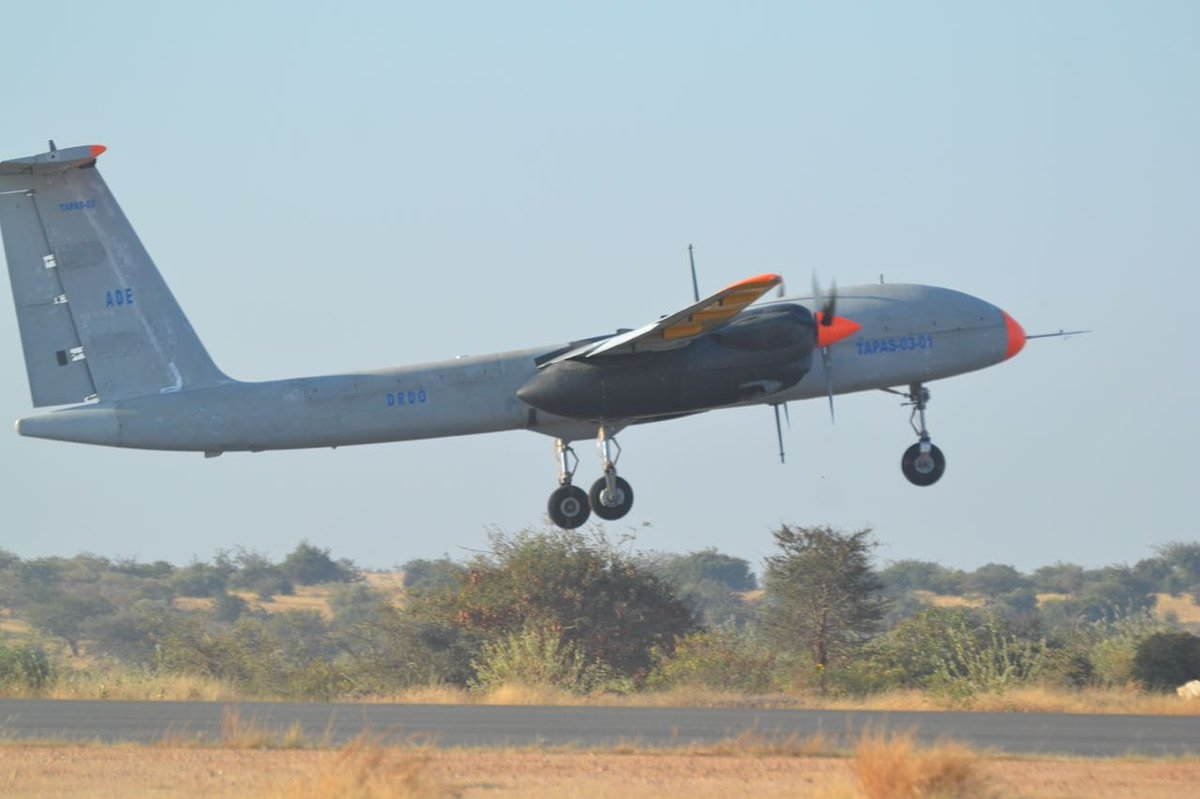India’s medium-altitude long-endurance drone Rustom-2 set to take off in April from its test range in Karnataka’s Chitradurga. It will fly for more than 18 hours at a height of over 26,000 feet, said a senior official.
Overcoming the initial program setbacks, the Defence Research and Development Organization (DRDO) had flight tested the Rustom-2 medium altitude long endurance indigenous prototype drone and achieved eight hours of test flying at an altitude of 16000 feet last year and now its being prepared to fly at 27000 feet.
The DRDO expects Rustom-2 surveillance drone to match the specifications of the Israeli Heron unmanned aerial vehicle used by the Indian Air Force and Navy. The push to Rustom-2 program was given after the People’s Liberation Army (PLA) tried to occupy Indian territory in Ladakh on the basis of a 1959 cartographical claim on the Line of Actual Control (LAC). The PLA has Wing Loong II armed drones in its arsenal and has even given four of them to Pakistan to protect the CPEC corridor and Gwadar port.
According to the DRDO, Rustom-2 is capable of carrying different combinations of payloads depending on the mission objectives including synthetic aperture radar, electronic intelligence systems and situational awareness systems. It has a satellite communication link to relay situations in the battle theatre on a real time basis.
The hard push to Rustom-2 is seen in the context of the continuing efforts to indigenously produce cutting-edge military equipment.
While the DRDO expects Rustom-2 surveillance drone to match the specifications of the Israeli Heron unmanned aerial vehicle used by the Indian Air Force and Navy, it has revitalized its drone program with a new mission head and objectives. The push to Rustom-2 program was given after the People’s Liberation Army (PLA) tried to occupy Indian territory in Ladakh on the basis of a 1959 cartographical claim on the Line of Actual Control (LAC). The PLA has Wing Loong II armed drones in its arsenal and has even given four of them to Pakistan to protect the CPEC corridor and Gwadar port.
Rustom-2, also known as TAPAS BH-201 (Tactical Airborne Platform for Aerial Surveillance-Beyond Horizon-201) has been developed by India on the lines of the American Predator drones. First flight of the UAV took place in November 2016 after a 3-year delay. It was revealed at that time that the UAV has been renamed from Rustom-II to TAPAS-BH-201.
The drone can loiter autonomously at high altitudes performing real-time, high-resolution intelligence, surveillance and reconnaissance with its SAR and EO sensors. When a target is identified, it will either illuminate the target with a laser designator or descend to a lower altitude and destroy it with its own air to surface missile.
The capability of automatic take-off and landing makes it comparable to some of the best in the world. The team developing the Rustom-II has faced weight reduction and systems issues, resulting in delay in its debut flight by over two years. It will now undergo a rigorous phase of flight trials.
“This will be a huge step,” said a senior government official to the Hindustan Times, about the indigenously-developed unmanned aerial vehicle (UAV) designed for strategic reconnaissance and surveillance operations. The drones, officials said, was one of the areas where India lagged behind and ended up relying on pricey imports from countries such as the USA and Israel.
On Sunday, Prime Minister Narendra Modi formally handed over the indigenous battle tank Arjun Mark 1A to the Indian Army as part of this renewed focus on achieving self-reliance in the defence sector.
Less than a fortnight earlier, the Cabinet Committee on Security headed by PM Modi decided to award Hindustan Aeronautics Limited (HAL) to supply 83 LCA (light combat aircraft) Mk-1A jets to the Indian Air Force.
India has a series of military tests and trials planned for 2021, including that of the Ballistic Missile Defence (BMD) shield, an Air-Independent Propulsion (AIP) system for submarines, and drones, besides a number of missiles, including a BrahMos with an 800-km range.




















